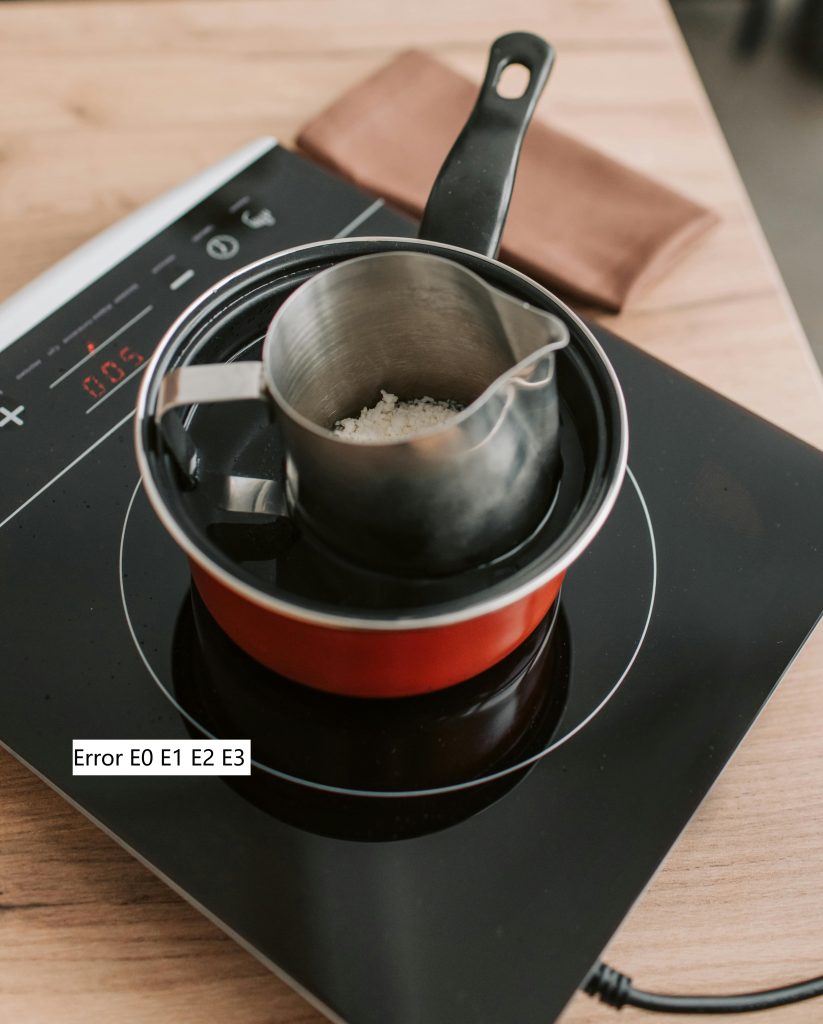
If your Summit induction cooktop suddenly stops working and shows one of those cryptic “E” codes, don’t panic—it’s likely a fixable issue. From incompatible cookware to overheating sensors and voltage fluctuations, this guide will walk you through how to interpret and resolve each error message.
Before calling a technician, try these easy, DIY troubleshooting steps that can save you both time and money.
⚙️ How Induction Cooktops Work (Quick Recap)
Summit induction cooktops use electromagnetic coils beneath a flat ceramic glass surface. When the cooktop is turned on, a magnetic current energizes the base of your pan or pot directly—heating the food, not the burner. This makes induction cooking energy-efficient, fast, and clean.
But like any modern appliance, it may throw error codes when things go wrong.
🔍 Understanding Common Summit Induction Cooktop Error Codes
❗ Code E0: No Cookware Detected or Incompatible Pan
What it means:
Error E0 appears when the cooktop doesn’t detect a compatible cooking vessel. Either no cookware is placed on the burner, or the cookware material isn’t magnetic.
How to fix it:
- Use flat-bottomed magnetic cookware—cast iron or magnetic-grade stainless steel.
- Avoid glass, ceramic, aluminum, and copper pans unless they have an induction-compatible base.
- Test tip: Stick a magnet to the bottom of your pan. If it sticks firmly, it’s compatible.
Example:
If you’re trying to boil water in a copper-bottom pot and see E0, switch to a stainless steel pot instead.
🔥 Code E1: Internal Overheating
What it means:
This error indicates that internal components are overheating, often due to blocked ventilation.
How to fix it:
- Unplug the cooktop and check for blocked air vents (dust, towels, nearby objects).
- Let it cool for 10–15 minutes, then restart.
- If the error reappears, the temperature sensor or cooling fan may have failed—contact a certified technician.
Pro Tip: Never place kitchen towels or cutting boards near the cooktop’s rear vent—they restrict airflow and cause overheating.
♨️ Code E2: Burner Overheating
What it means:
The burner has become too hot, usually because cookware was left empty or overheated.
How to fix it:
- Always place food or liquid inside the pot before turning on the burner.
- Turn off the cooktop and let it cool for 10 minutes.
- Avoid dry boiling or preheating an empty pan.
Example:
If you accidentally heat an empty skillet to make eggs and E2 pops up, cool it down first before retrying.
⚡ Code E3: Voltage Error – Too High or Too Low
What it means:
E3 appears when incoming voltage is outside the safe range—either too high (over 240V) or too low (below operational threshold).
How to fix it:
- Check your circuit breaker or fuse box for tripped switches.
- Reset any blown fuses, then restart the cooktop.
- Wait 5–10 minutes before turning it back on.
If this happens frequently, your home may have unstable voltage. You may want to consult an electrician or install a voltage stabilizer.
🧠 FAQ – Summit Induction Cooktop Error Codes
Q1: Can I fix error E0 by myself?
Yes! Just make sure you’re using magnetic cookware. A simple magnet test will confirm compatibility.
Q2: Is overheating (E1 or E2) dangerous?
Not immediately, but it can damage internal parts if ignored. Always give your cooktop time to cool before restarting.
Q3: Why does E3 happen during storms or summer?
Voltage fluctuations are common during storms or high-demand seasons. Wait a few minutes before retrying.
Q4: Do all induction cooktops use the same error codes?
Not always. While E0 to E3 are common, check your Summit model’s user manual for model-specific codes.
🧯 Final Thoughts: Summit Induction Cooktop Maintenance Tips
- Clean the ceramic surface after every use to prevent food buildup and false sensor readings.
- Don’t stack cookware near the vent.
- Keep your kitchen’s electrical system grounded and up-to-code.
- When in doubt, call a certified Summit technician for repair.
With just a magnet and a bit of patience, most error codes can be handled without stress. So next time your cooktop flashes a warning—don’t worry, just troubleshoot!

Leave a Reply
You must be logged in to post a comment.